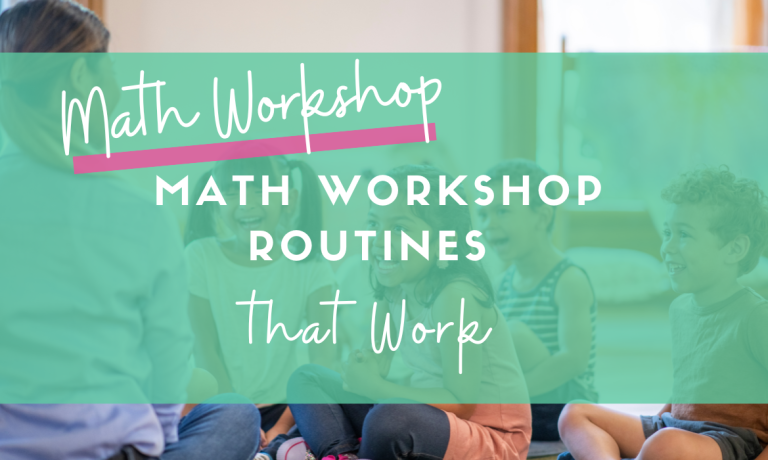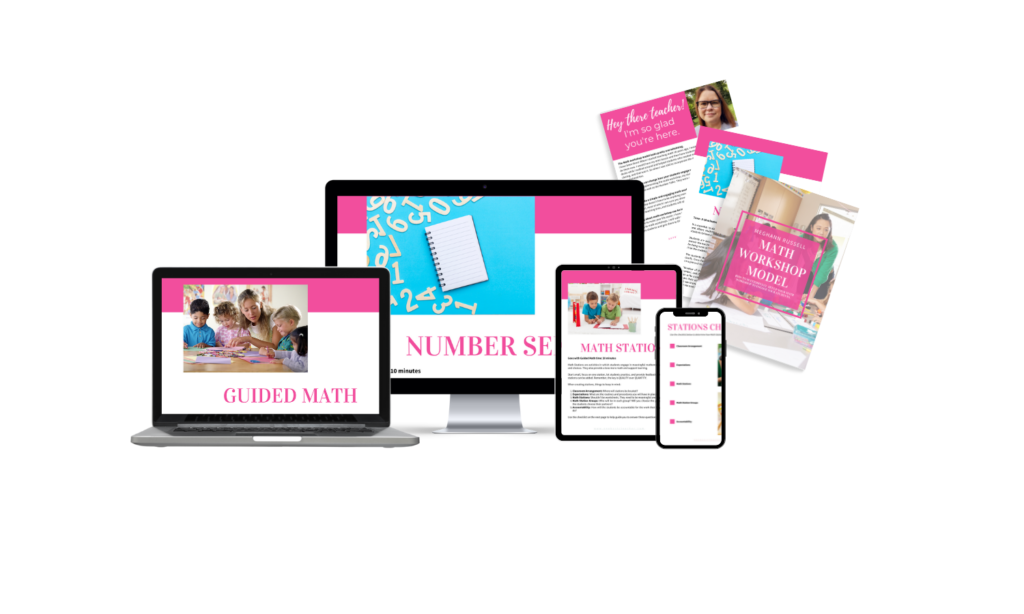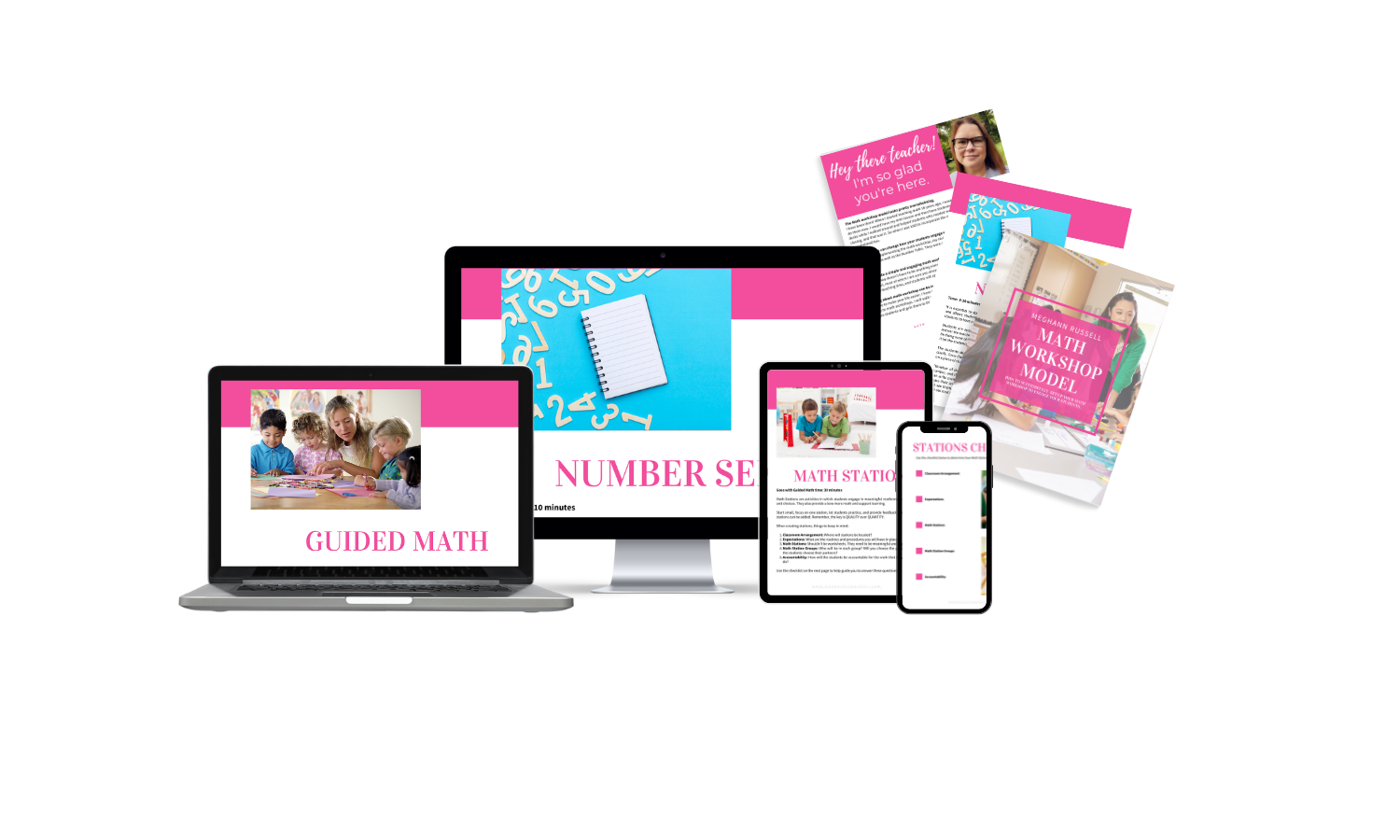Math is my favorite subject to teach! I am a first-grade teacher, so that isn’t usually the norm. I love working with numbers, and Math Workshop is my favorite. It’s not like I start on day one with my five parts of math workshop, and BOOM- they are up and running.
No, it takes time. You need to establish routines from day one and get those going and solid before you move on to the whole blowout workshop.
So, in this post, I will share with you Math Workshop routines that work and are easy to implement in your classroom!
Now, before I get into the nitty-gritty of Math Workshop routines, if you are looking for a guide to set up your own Math Workshop, I have a guide for you sent directly to your inbox! Just a teacher helping out another teacher! Click here to make your math workshop more engaging and fun!
Math Workshop Model
Math Workshop is a model that allows students to be engaged in math. This can include open-ended problem solving, small group instruction, student choice, and time to practice concepts and skills taught throughout the year. It involves five different components to your math block:
- Number Sense routine
- Whole Group lesson
- Small group instruction (or guided math)
- Math stations
- Closing or a debrief
It is crucial that, as the teacher, you are not always talking or lecturing. The students need time to explore math concepts and find a way to solve a problem independently. This is truly the most challenging part of the Math Workshop.
As teachers, we want to show our students the easiest way to solve problems. They need to understand numbers and see math in their environment. Students make connections and determine problems that need to be solved. As teachers, we must guide and facilitate that learning.
Math Routines and Procedures
Let’s face it; if you don’t have your math routines set, Math Workshop will not run smoothly. This is the essential part of the workshop, and you must ensure that you get it right. Don’t worry if it takes weeks (or months!) to get it set in stone. It’s okay. It takes however long it takes. Also, don’t worry if you must go back and practice a few more times later down the road; that is to be expected.
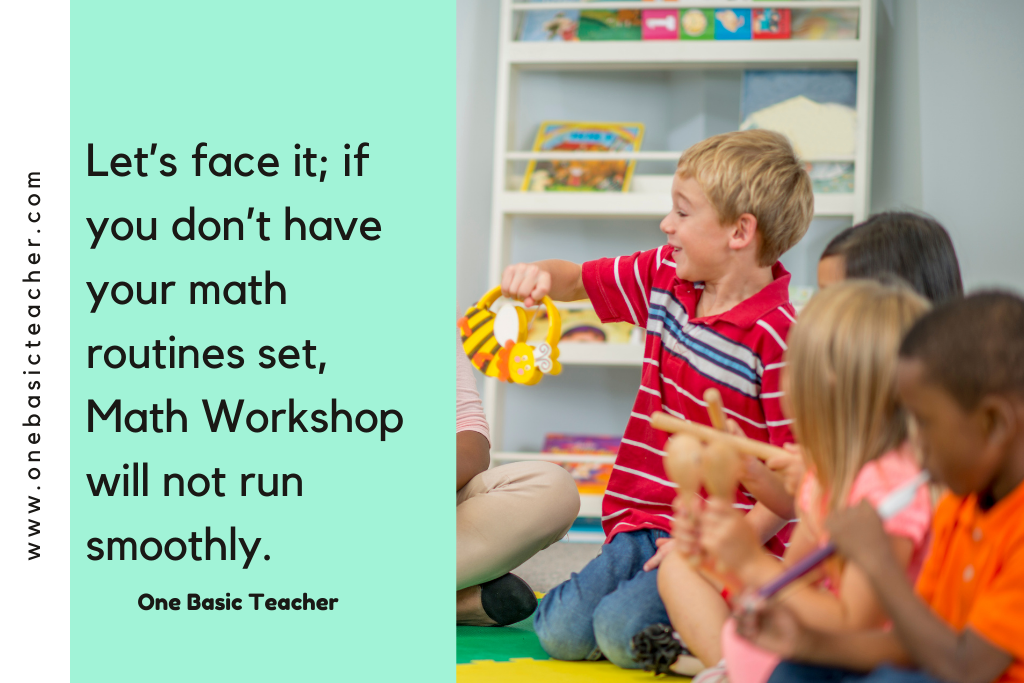
What can I do?
Our favorite questions from students are “What do I need to do?” or “I’m done. What should I do?”. These questions are what you need to have answers for. The first part you need to consider is the students’ expectations when they work. Do they have a station they need to go to and a choice board they can pick from? Ensure the students know how to go to their activity and get to work immediately. You also need to think about when they are done. What do they do? Go to a computer activity or a review game? Make sure you have a plan, and the students know the expectation. Feel free to make an anchor chart with the students so they can reference them. Don’t be afraid to review this chart daily. Kids need the reminders!
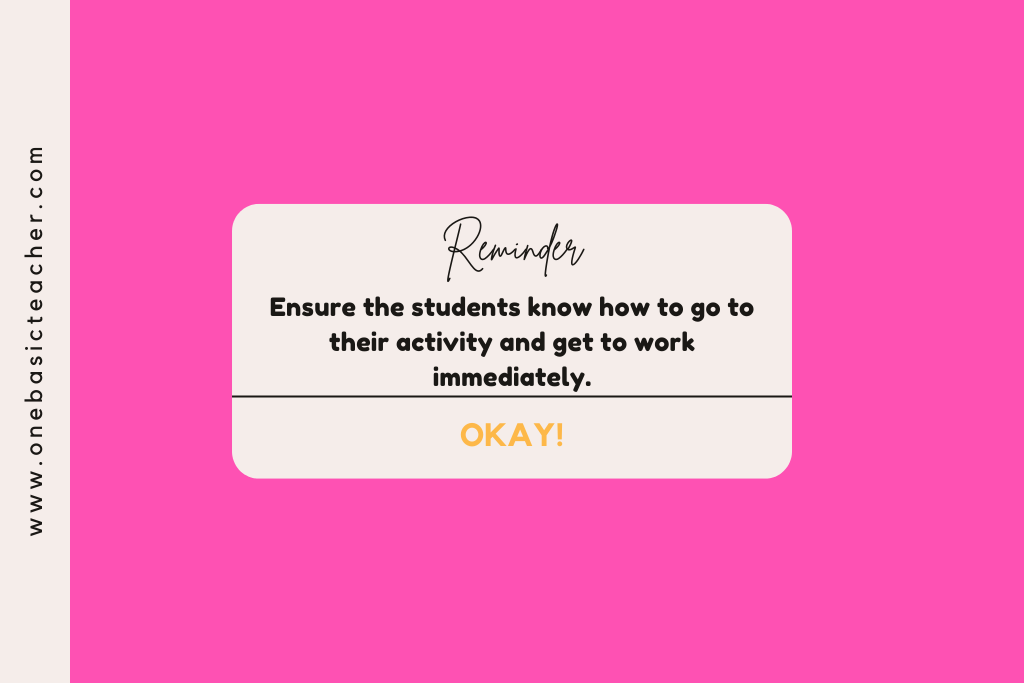
How Long is a Station?
Stations can be anywhere from 5-15 minutes. They don’t need to be that long. While planning your stations or your choice time activities, you need to think about how long you will have the stations. You need to think about how you will let the students know it’s time to switch stations. Are you going to have a timer? Are you going to signal to your students it’s time to change stations? I have a timer on the board labeled stations and students’ names/groups. When the timer goes off, I have a second timer that gives them 2 minutes to clean up and come to the carpet.
However, some classes may not be able to have a timer visible because students fixate on the timer. That is fine; you can always keep the timer on your phone or watch and just tell your students that it is time to switch. You need to think about what works best for your students.
Math Workshop Room Arrangement
Arrangement of the Math Workshop usually gets put to the bottom of the list regarding routines. However, this needs to be placed at the top of the list. Students need to know where to go to complete their activity, and it must be visible to you at all times. Think about where you want each station or choice to be. For example, if you have a Math Journal station, should the students be at their seats, or can they grab a lap desk and work somewhere in the room?
You will also need to think about math materials. You need to think about where the materials are going to be stored. Think about how the students will get their materials. Do they have a box with all the supplies they need, or are the bins they need to get the materials out of?
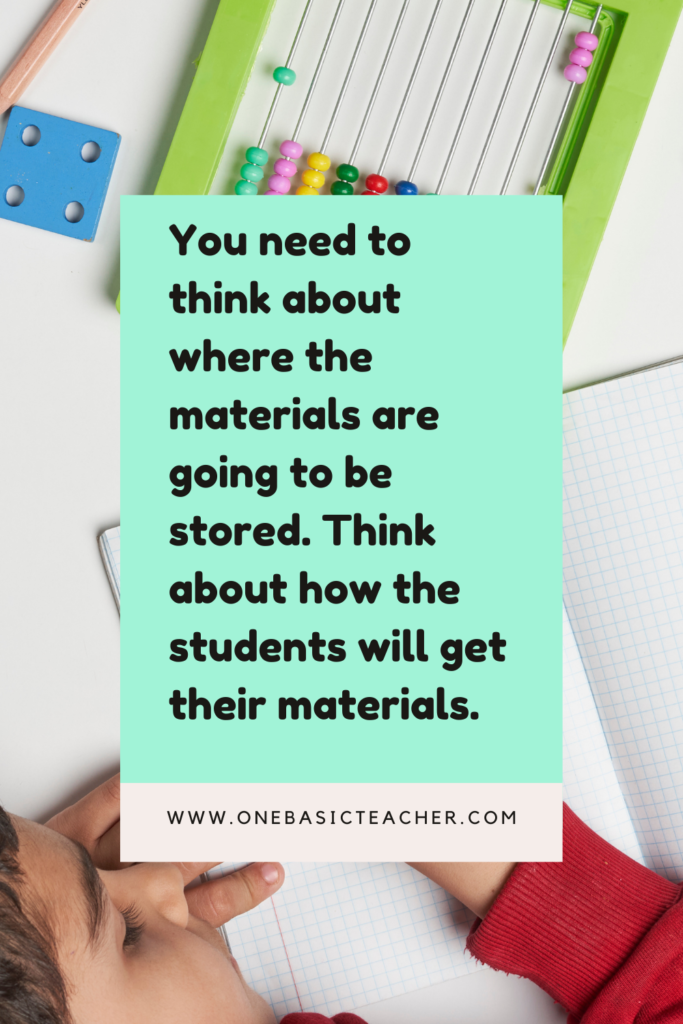
I have a shelf with bins specifically for math materials that they will need for the activities they will work on. I also have containers where I keep each station’s activities. For example, my math journal station has a bin with the paper they will need to put in their math journal. The picture that is on the station board matches the image that is on the bin. Students know that when they are at the math journal, they just need to find the bin that fits the picture on the board.
Find a system that works for you and practice with your students.
Interactions with students
The final part of the routines you need to plan, and practice is when you have students do group or partner work. This is another essential piece to your routines you must practice many times! You first need to think about how they will work as partners. Do they get to choose, or do you choose their partners for them? It depends on the class. Some classes can handle choosing their partners; others cannot. You need to be aware of this.
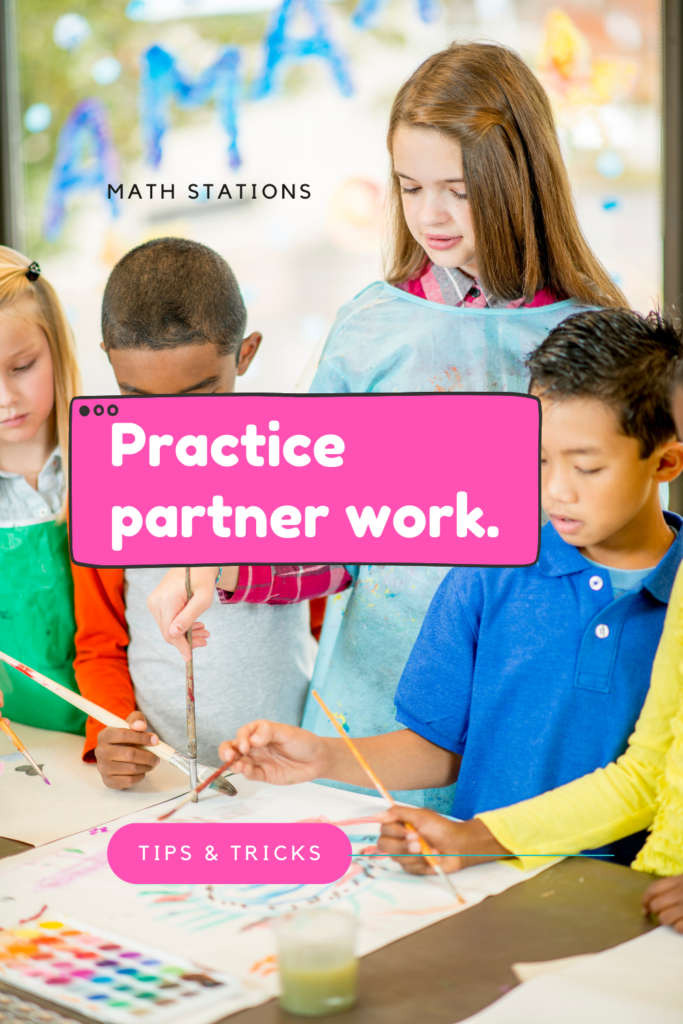
You must make sure that you practice partner work with your class for a while before you release it to them. Think about these things:
- How will students take turns? (I teach my students “rock, paper scissors).
- What will they do if they disagree with their partner?
- How will you make sure your students are on task?
- What do they do when they are done?
Make sure you practice partner work many times before you release them to independent stations. Again, don’t be afraid to revisit the routines if you need to. Every class needs to practice again at some point in the year.
Math Workshop Routines
Routines are an essential part of the workshop. You need to think about what students need to do at their stations, how to get materials, where to go to work on their stations, how to work with partners, and what to do when they are done with their activity. Don’t worry if it takes weeks (or months!) to get it set in stone. It’s okay. It takes however long it takes. Also, don’t worry if you must go back and practice a few more times later down the road; that is to be expected.
Once you have these routines in place, your Math Workshop will run smoothly, and you will find students are engaged and practicing those math skills.

Related Articles
3 Awesome Things You Need to Know About Math Workshop

